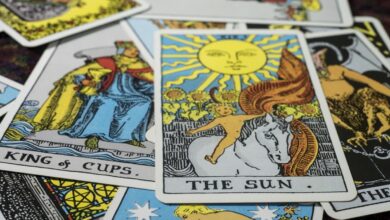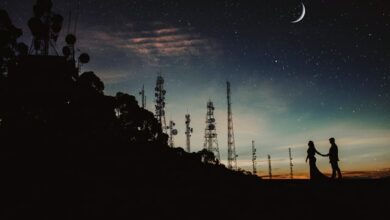
Most people are aware of just how important self-esteem is to nearly every facet of life. From working the job of your dreams to building a business to having healthy relationships of all types, self-esteem is a pivotal part of feeling whole, complete, and content with yourself. The following are some self-esteem boosters for each of the zodiac signs that will help everyone harness their energy to the fullest.
Aries-Just Do It
As the first zodiac sign, Aries you have got to own your Martian energy. You’re not here to live a life of being in the background afraid to take action. You are a fearless fighter for a reason because you are willing to take risks that would intimidate others. It’s your biggest asset. So, stop being a scaredy-cat and get out there and just do it! The world will open up to you, and you’ll find that you are a lot more confident in yourself when you stop doubting yourself and take action. Doing so will definitely increase your self-worth, self-confidence, and self-esteem.
Taurus-Strong Foundations
Read More »Gemini-Talk That Talk
Gemini, you understand just how important it is to communicate effectively with others. After all, you are the air-ruled Mercury sign of the zodiac. It’s important that you learn how to harness your ability to be a connective, communicative force in a way that is advantageous for you. As the collector and sharer of information. this is an important position to hold as it gives you powerful leverage if you know how to use it wisely. Aim to use your ability to connect with others via communication in a way that benefits others and yourself simultaneously. In doing so, you’ll experience a sense of self-esteem and self-worth.

Cancer-Personal Emotional Security
Cancer, it’s important for you to feel emotionally secure. While you may seek out close bonds with family members, lovers, friends, and even through creating a family of your own, it is important that you learn how to create emotional security within yourself. In doing so, you’ll get the best of both worlds. You’ll be able to be a caring, nurturing individual for others while also being able to be a source of comfort and care for yourself. In an ideal world, those we love the most would always be able to be there for us emotionally. but the truth of the matter is that this is not always possible. For this reason, it’s important to be emotionally secure for yourself. Take time to give yourself all of the caring and nurturing you give others and form a sense of security within yourself so that you will always feel at home within yourself.
Leo-Purpose In The Spotlight
Leo, let’s face it. We all know that you love being adored and admired, and you just can’t resist being the center of attention. However, if you really want to boost your already apparent self-confidence, you may want to align your desire to be seen with your life purpose. When you are using the desire to be seen in a way that has a purpose, you’ll find that seeking the spotlight is not just for your ego fulfillment. You’ll be standing in your light while also giving warmth and light to others. So, get in touch with what makes you truly special and seek to share that with others. In doing so, you’ll get the self-esteem boost of being seen, admired, adored, and appreciated all the while standing in the light of your purpose.
Virgo-Service In Order
Virgo, you are the dedicated, grounded earth sign that is always ready to be of service. In fact, a lot of your personality is based on your ability to be helpful in practical ways. However, it is important that you make sure to do this for yourself before you even try to do so for others. Otherwise, you risk making others your own personal “fix it” projects. Virgo, we all know that you can be critical at times, and if you aren’t focusing on making yourself better, you can project that criticism onto others in an effort to fix people to make them “good enough” for yourself. As the servant of the zodiac, you can increase your own self-esteem by making sure that you are putting as much effort into your own self-improvement and moving towards wholeness as opposed to seeking perfection which leads you to feel inadequate and self-critical.

Libra-Balancing Your Scales
Libra, your changeable, airy nature makes you willing to see everyone’s perspectives, and it offers you the ability to compromise. This leads to you being quite easy to get along with. While you’re always seeking to balance the energy in your environment, are you balanced within yourself? Much of the balance that you’re seeking is something that you first achieve for yourself. Even though you are likely to seek out others in relationships of all types to feel even-keeled, it is your responsibility to make sure that you have your own personal equilibrium so that you are able to be in a relationship with others without having to compromise yourself.
Scorpio-Seek Transformation
Scorpio, you have a very special path that requires that you consistently transform yourself, and because of this, you are likely to experience several versions of yourself throughout your lifetime. One of the major problems with Scorpio energy is its tendency to get stuck in the muck of revenge, emotional betrayals, and dwelling in the shadow to its detriment. The experience of the shadow allows you to be able to see yourself clearly so that you can release what is no longer valid as you move through the stages of transformation. Scorpio, your self-esteem increases when you clearly see yourself leaving behind all of the negative energy that keeps you stuck in lower evolutionary states that you are being called to leave behind. Reach for transformation, Scorpio, and you will find that your self-esteem, self-confidence, and awareness will increase as you shed the skin of your old self.
Sagittarius-Broaden Those Horizons
Sagittarius, you are not here to just stay confined to what you know. As a Jupiter-ruled sign, your life is all about the expansion of your mental and physical horizons. If you find that you’re being narrow-minded, hypocritical, and biased, these are cues that you need to use the energy of your natal Jupiter rulership to broaden your perspectives. Sagittarius understands the importance of being connected to people, places, and things that go beyond their usual native environments. Doing so allows you to have experiences that increase your understanding of life and the human condition. It will also help in increasing your faith and the abundance that you know is innately part of the lived experience. Be the archer that you are, Sagittarius, and allow your arrow to lead you to broader horizons that will ultimately increase your self-awareness and self-esteem.
Capricorn-Being The Master Planner
Capricorn, you will find self-esteem and self-worth in being the responsible, accountable planner that you naturally are. There’s nothing worse than watching a Capricorn fail at life simply because they won’t take accountability for themselves. More than any other sign, Capricorn, you just can’t get away with skating through life. Saturn, your planetary ruler, simply won’t have it. So, if you want to feel like you accomplished something with your life, which is important to you, take the wise path of creating a plan for your life. While you can’t always plan out everything exactly the way you want, you can offer yourself structure, clarity, and a self-esteem boost when you get to becoming the accomplished version of yourself.

Aquarius-Innovative Quirkiness
Aquarius, given that you are ruled by none other than the planet of Uranus, your purpose is to embody everything that makes you unique while also respecting the uniqueness of others. You have the unique ability of embracing what makes you unique and then taking this back to the group, society, and humanity at large encouraging all to truly honor who they are. While it may seem appealing at some point in your life to just blend in with the group, that is not necessarily your path nor will it always make you feel good about yourself. Instead, honor who you are quirks and all with authenticity. In doing so, you are in a better position to meet other like-minded people while increasing your ability to confidently share who you are with the world unapologetically and for the benefit of all.
Pisces-Making Dreams Come True
Pisces, as the last zodiac sign, you pretty much have seen and experienced it all. You are definitely the old soul of the zodiac, and this can make you appear to be a bit less motivated than others. However, you’ve got this secret that most kind to aren’t innately aware of. You know that this whole experience is energy and that we are all connected. All are available through energy whether it be manifestation, visualization, etc. The problem, Pisces, is that have to get yourself out of the clouds to make the best use of this energy. Your self-esteem will skyrocket when you truly understand that you are everything and everything is you. Separation is an illusion. Understanding that we are all one and connected via Source energy brings the awareness that nothing is outside of your grasp. This spiritual epiphany will literally change your life if you so choose and put you on the path to living the life of your dreams in real-time.
Hopefully, these suggestions on how to harness your zodiac sign energy benefit you. So, get out there and be all that you can be! A self-confident, self-esteem-boosted life awaits you.





